PDF chapter test TRY NOW
A planet is an astronomical object or a celestial body that orbits a star.
The solar system comprises the Sun and eight planets. Based on their increasing distance from the Sun, they are arranged as Mercury, Venus, Earth, Mars, Jupiter, Saturn, Uranus and Neptune.
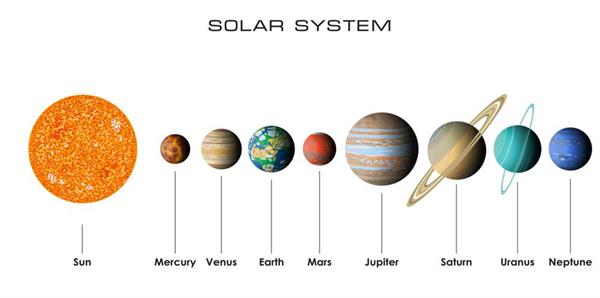
Planets in the solar system
The eight planets in the solar system are not spaced evenly and are categorised as inner planets and outer planets.
Inner planet:
The first four planets that are closer to the Sun are called inner planets. They are Mercury, Venus, Earth, and Mars. These planets are also called terrestrial planets or rocky planets, as they have solid, rocky surfaces forming an inner solar system.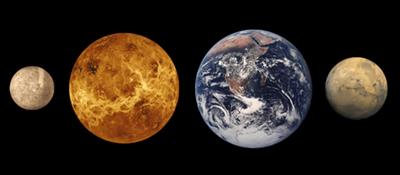
Inner planets: Mercury, Venus, Earth and Mars
The surface and atmospheric composition of inner planets are formed in a similar way and have a similar pattern. Inner planets do not have any rings (tiny pieces of rock covered with ice) around them.
Outer planet:
The next four planets that are farther away from the Sun are called outer planets. They are Jupiter, Saturn, Uranus, and Neptune. The four outer planets have a very dense atmosphere comprising hydrogen, helium and other gases. These gaseous planets are called Gas giants or Jovian planets since they do not have solid rocky surfaces.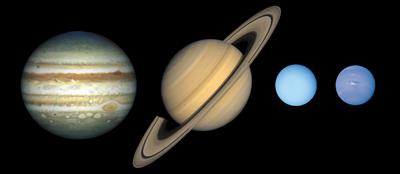
Outer planets: Jupiter, Saturn, Uranus and Neptune
The outer planets have a system of rings around them and a large number of satellites. The gas giants orbit slowly around the sun compared to the inner planets.
Other basic terms:
Orbit:
The planet revolves around the Sun in a definite curved or elliptical path called an orbit.
Since the planets revolve in orbit, they do not collide between the other celestial bodies while revolving around the Sun.
Revolution:
The period of revolution is the time taken by a planet to revolve around the Sun.
The period of the revolution depends on the distance of the planet from the sun. As the distance of the planet increases from the sun, its revolution period also increases.
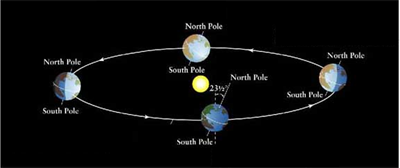
Revolution of Earth
Rotation:
A planet rotates or spins on its axis while revolving around the Sun. The period of rotation is the time taken by a planet to complete one rotation on its axis.
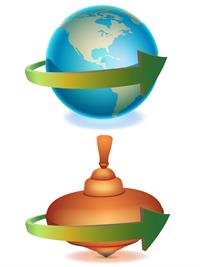
Earth's rotation compared to a spinning top
